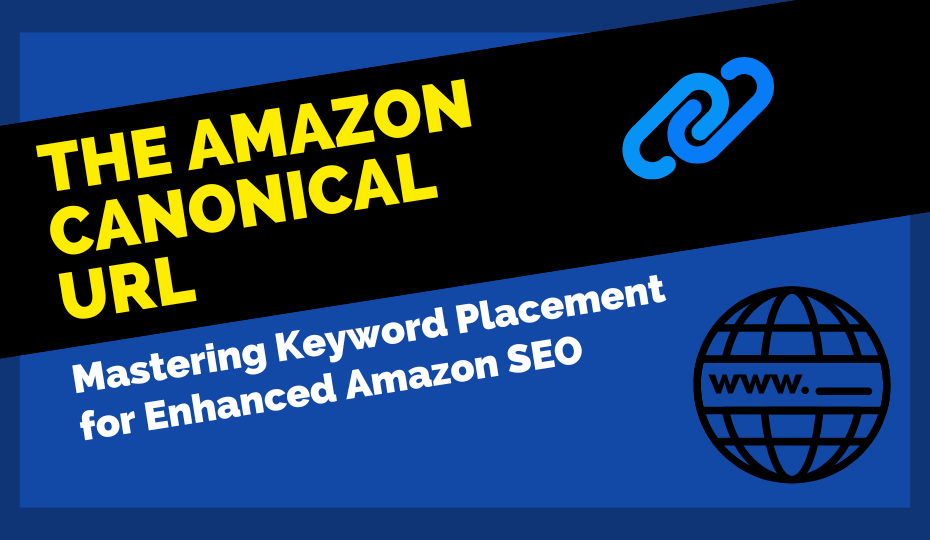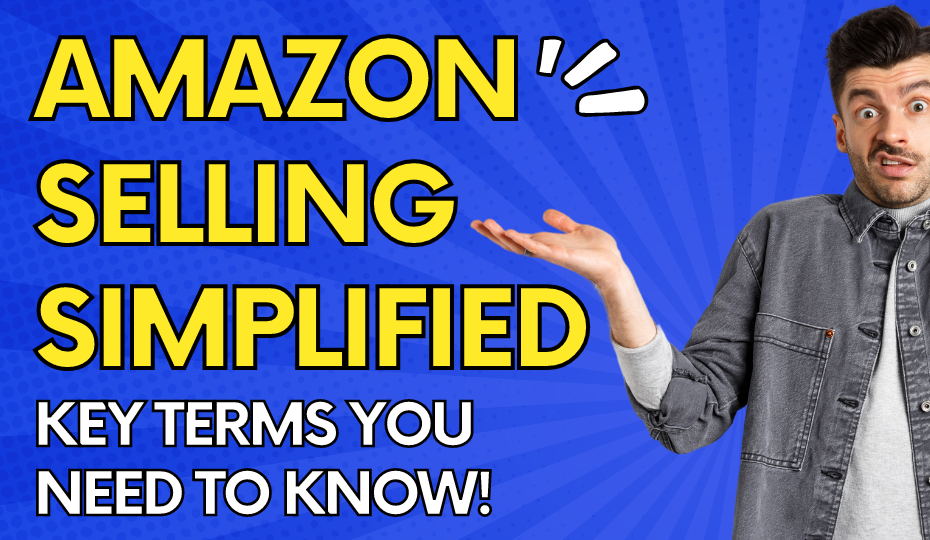· readysetfba · Sales · 6 min read
The Amazon Canonical URL: Keyword Placement for Enhanced Amazon SEO
In today's highly competitive world of Amazon product listings, understanding the intricacies of search engine optimization (SEO) is crucial for success. One vital aspect that often goes unnoticed is the Amazon Canonical URL and its impact on keyword placement.

In today’s highly competitive world of Amazon product listings, understanding the intricacies of search engine optimization (SEO) is crucial for success. One vital aspect that often goes unnoticed is the Amazon Canonical URL and its impact on keyword placement. In this comprehensive guide, we will unveil the secrets of the Amazon Canonical URL, shed light on its importance, and provide expert strategies to optimize it for better ranking and visibility on the platform.
Also read Amazon Fba Pallet Requirements
1. Introduction
The Amazon Canonical URL is a direct link to a product’s detail page, but it goes beyond being a simple URL. It serves as a gateway for search engines to understand the content and relevancy of a product listing. By leveraging the power of keywords in the Canonical URL, sellers can enhance their Amazon SEO efforts and improve their chances of ranking higher in search results.
Also read Amazon Fba Warehouse Locations
2. Understanding Amazon’s Canonical URL
2.1 Definition and Structure of a Canonical URL
A Canonical URL on Amazon is formed by extracting keywords from the product’s title and separating them with hyphens. It follows the structure: https://www.amazon.com/words-from-the-products-title/dp/ASIN. This URL slug plays a crucial role in conveying the product’s relevancy to search engines.
2.2 Finding a Product’s Canonical URL
Discovering a product’s Canonical URL is essential for optimizing keyword placement. Two common methods to find it are through search results or by inspecting the page elements using browser developer tools. By searching for the word “canonical” or examining the page’s code, you can locate the “true” Canonical URL.
Also read Amazon Fba Calculator
3. The Role of Keywords in the Canonical URL
3.1 Importance of Keywords in SEO
Keywords are the backbone of SEO, and their placement within the Canonical URL is no exception. Google indexes the Canonical URL for search results, and by aligning the keywords in the URL with users’ search queries, sellers can increase their chances of appearing in relevant search results. Proper keyword optimization in the Canonical URL helps improve organic visibility and attracts potential buyers to the product listing.
3.2 Potential Impact on Amazon Keyword Ranking
While the impact of Canonical URL keywords on Amazon keyword ranking is a subject of debate, it’s essential to understand the interplay between keywords, the title, and ranking factors. The challenge lies in attributing keyword ranking solely to the Canonical URL since keywords are also present in the title—a significant influencer of keyword ranking. Further research is needed to provide conclusive evidence, but optimizing the Canonical URL remains a valuable strategy to enhance overall Amazon SEO efforts.
Also read Which Countries Are Allowed To Sell On Amazon Usa
4. Leveraging Canonical URL for Better Ranking
4.1 Strategies to Optimize Canonical URLs
Optimizing the Canonical URL is an effective approach to enhance your Amazon SEO efforts. By strategically influencing the keywords included in the Canonical URL, you can improve your product’s visibility and ranking on the platform. Here are some expert strategies to optimize your Canonical URLs:
a) Thorough Keyword Research
Before crafting your product’s title and Canonical URL, it’s crucial to conduct thorough keyword research. Identify high-volume, relevant keywords that align with your product and target audience. Analyze the keywords used by your competitors and consider long-tail keywords that can better target specific customer queries.
b) Strategic Title Optimization
Crafting an optimized title is essential not only for attracting potential buyers but also for influencing the keywords in your Canonical URL. Align the keywords in your title with the ones you want to appear in the Canonical URL. However, it’s important to maintain a natural flow and avoid keyword stuffing, as this may negatively impact your listing’s performance.
c) Consistency Across Product Metadata
To optimize your Canonical URL, ensure consistency across your product’s metadata. Align the keywords used in your title, bullet points, product description, and backend keyword fields with those you want to include in the Canonical URL. This holistic approach signals to Amazon and search engines that your product is relevant to specific search queries.
4.2 Leveraging Canonical URL for Amazon SEO
Optimizing your Canonical URL not only enhances your visibility on Amazon but also contributes to improved ranking. By following these strategies, you can leverage the power of Canonical URLs to boost your Amazon SEO efforts:
a) Enhanced Relevance in Search Results
When users search for specific keywords on Google, the search engine indexes the Canonical URLs of Amazon product listings. By aligning the keywords in your Canonical URL with popular search queries, you increase the chances of your product appearing in relevant search results. This enhanced relevancy helps attract potential buyers to your listing.
b) Strengthened Keyword Ranking Potential
While the impact of Canonical URL keywords on keyword ranking within Amazon is still a topic of debate, optimizing your Canonical URL provides an additional opportunity to strengthen your keyword ranking potential. By strategically incorporating relevant keywords in your Canonical URL, you increase the signals to Amazon’s algorithm that your product is highly relevant for specific search queries.
c) Improved Organic Visibility
An optimized Canonical URL, aligned with relevant keywords, contributes to improved organic visibility on both Amazon and external search engines. When search engines like Google index your Canonical URL and highlight keywords from the search query, it increases the likelihood of attracting organic traffic to your product listing. This increased visibility can result in more clicks, conversions, and ultimately, higher sales.
Also read Amazon Fba Size Tiers
5. How to edit Amazon Canonical URL?
Imagine this: you’re creating a product listing for the first time on Amazon, and once you generate the canonical URL, it becomes set in stone. It’s like carving your name on a tree trunk—it’s there to stay. So, remember, the canonical URL of your listing cannot be changed once it’s established. It’s a permanent marker that guides visitors to your product’s digital doorstep.
The canonical URL of your listing remains unchanged once it is generated during the initial creation of your product listing.
Also read About Us
Conclusion
In conclusion, the Amazon Canonical URL plays a significant role in optimizing your product listings for better ranking and visibility on the platform. While the impact of Canonical URL keywords on Amazon keyword ranking is still subject to ongoing debate, there is value in optimizing your Canonical URL to enhance your overall Amazon SEO efforts.
By conducting thorough keyword research, strategically optimizing your product’s title, and ensuring consistency across your product metadata, you can influence the keywords included in the Canonical URL. This, in turn, enhances your relevance in search results, strengthens your keyword ranking potential, and improves your organic visibility on Amazon and external search engines.
Mastering the power of Amazon’s Canonical URL requires continuous monitoring, experimentation, and adaptation. Stay updated with the latest SEO trends, analyze your competitors’ strategies, and make data-driven optimizations to unlock the full potential of your product listings.
Remember, the Amazon ecosystem is vast and constantly evolving. By understanding and effectively utilizing the Canonical URL, you can position yourself to be better placed in the market.


